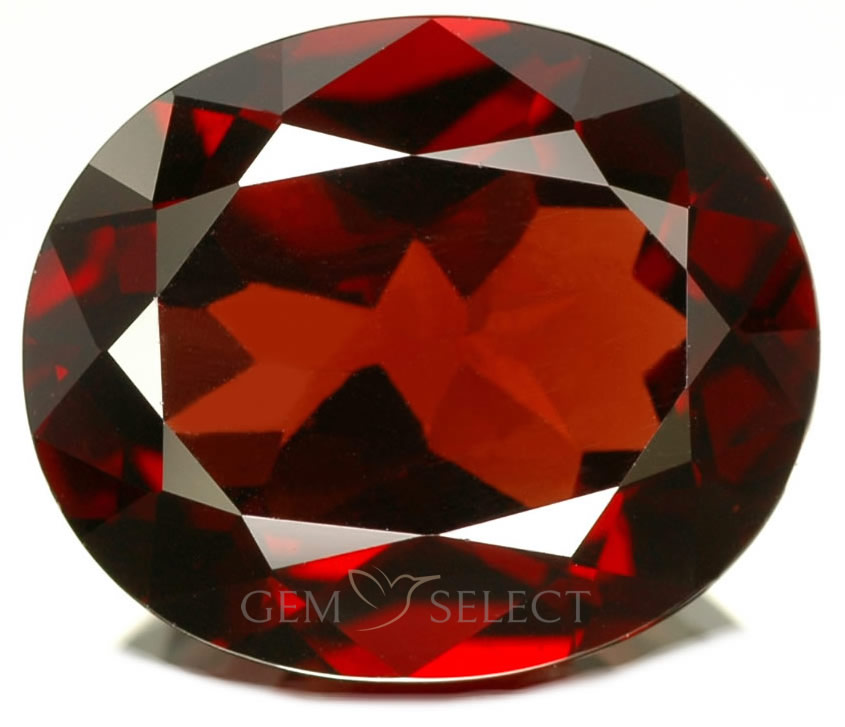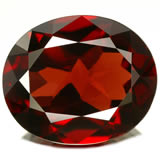Pyrope Garnet: The Fiery Red Gemstone

Introduction and History
Pyrope garnet, with its deep red hue and fiery brilliance, is a standout among red gemstones. Often compared to ruby or pomegranate seeds, this gem’s vibrant color comes from its magnesium-rich composition, though it often blends with almandine, another red garnet with more iron. If you’re picturing a gem that’s practically glowing, you’re on the right track! The name "pyrope" comes from the Greek "puropus," meaning "fiery-eyed," thanks to its high refractive index that gives it that dazzling sparkle.
Red garnets like pyrope have been treasured for millennia. Egyptian pharaohs used them in decorative and ceremonial pieces, while ancient Romans sported garnet rings and traded these gems widely. Back then, red gemstones cut en cabochon were called "carbuncles"—not the most flattering term, since it also referred to boils! Thankfully, today we just call them stunning. The term "carbunculus," Latin for a burning ember, perfectly captures pyrope’s glowing red hue. By the 16th century, large pyrope deposits in Bohemia (now the Czech Republic) made this gem a jewelry industry star, and Bohemian garnets are still mined today.
For a full overview of garnet’s history, species, and properties, visit our Garnet Gemstone Information page.
Identifying Pyrope Garnet
So, how do you know you’ve got a pyrope garnet on your hands? It’s a magnesium aluminum garnet, but it often mixes with almandine (iron aluminum garnet), making pure pyrope rare. The best clue is density: pyrope is lighter (3.6) compared to almandine (4.3). You can also spot garnet by its occurrence in metamorphic rock, its hardness (6.5–7.5 on the Mohs scale), and its cubic crystal structure. But here’s a cool trick: pyrope is attracted to strong neodymium magnets due to its iron or manganese content, making it stand out from other gems.

For a broader introduction to garnets, check out All About Garnet.
Origins and Sources
Pyrope garnet is sourced from places like China, Madagascar, Myanmar, South Africa, Sri Lanka, Tanzania, and the United States. The Czech Republic’s Bohemian garnets, known as “Prague garnets,” are especially famous for their deep red color and have been mined since the 17th century. While these deposits still exist, African sources dominate commercial mining today. If you’re after that classic Bohemian vibe, keep an eye out for those rich, dark reds!
Buying Guide
Color
Pyrope’s signature dark red is most vibrant in smaller stones. Larger ones can appear almost black, so size matters when choosing that perfect fiery hue.
Clarity and Luster
Look for “eye-clean” pyrope garnets—those free of visible inclusions. Their glossy, vitreous luster is a big part of their charm.
Cut and Shape
Pyrope is versatile, cut into faceted stones or cabochons. Faceted cuts really show off its brilliance, but larger stones are rare, so don’t expect massive gems.
Treatment
Good news: pyrope garnet is typically untreated. Just watch out for fakes, especially when shopping for locality-specific stones like Bohemian garnets.
If you are planning to buy a pyrope garnet, check out our Garnet Buying Guide for expert shopping tips.
Gemological Properties
| Chemical Formula | Mg4Al2(SiO4)3 Magnesium aluminum silicate |
| Crystal Structure | Cubic, rhombic dodecahedron, icositetrahedron |
| Color | Red, often with a brown tint |
| Hardness | 6.5 to 7.5 on the Mohs scale |
| Refractive Index | 1.720 - 1.756 |
| Density | 3.62 - 3.87 |
| Cleavage | Indistinct |
| Transparency | Transparent to opaque |
| Double Refraction | Usually none |
| Luster | Vitreous |
| Fluorescence | Mostly none |
For more gemology terms, check out our Garnet Gemstone Information page.
Mythology and Healing Powers
Garnets have a rich history as travelers’ stones—legend has it Noah used a garnet lantern to navigate the ark at night! In Hindu traditions, garnet is tied to the root chakra, promoting healthy sexuality, security, and stability. It’s also believed to boost circulation, self-confidence, and business success. As January’s birthstone and Aquarius’ zodiac stone, pyrope carries a lot of symbolic weight. Read more about garnet’s traditional symbolism and healing powers on our Garnet Meaning and Powers page.
Jewelry Design Ideas
Pyrope’s fiery red hue was a hit in 18th- and 19th-century Europe, especially in Bohemian jewelry, where small, closely-set stones mimicked pomegranate seeds. These vintage designs are timeless, but pyrope also shines in modern pieces like sleek silver settings or mixed-gemstone creations. Its durability (6.5–7.5 Mohs) makes it great for rings, earrings, or pendants. Pro tip: pyrope’s rich color pairs well with gold or silver and is a budget-friendly alternative to ruby, especially for men’s jewelry.
Note: Buy pyrope by size, not carat weight, as colored gems vary in density compared to diamonds.
Famous Pyrope Garnets
One standout example is an antique pyrope garnet hairpin at the Smithsonian Museum of Natural History, showcasing the deep red beauty of Bohemian garnets from the Czech Republic. It’s a gorgeous nod to this gem’s historical significance.
Care and Cleaning

Pyrope garnets are tough, but they’re not invincible. Protect them from hard knocks, and clean them with warm soapy water and a soft cloth. Rinse thoroughly to avoid soap residue. Skip ultrasonic cleaners or steamers, and don’t expose them to sudden temperature changes. When storing, wrap pyrope in a soft cloth or place it in a fabric-lined box to prevent scratches from other gems.


